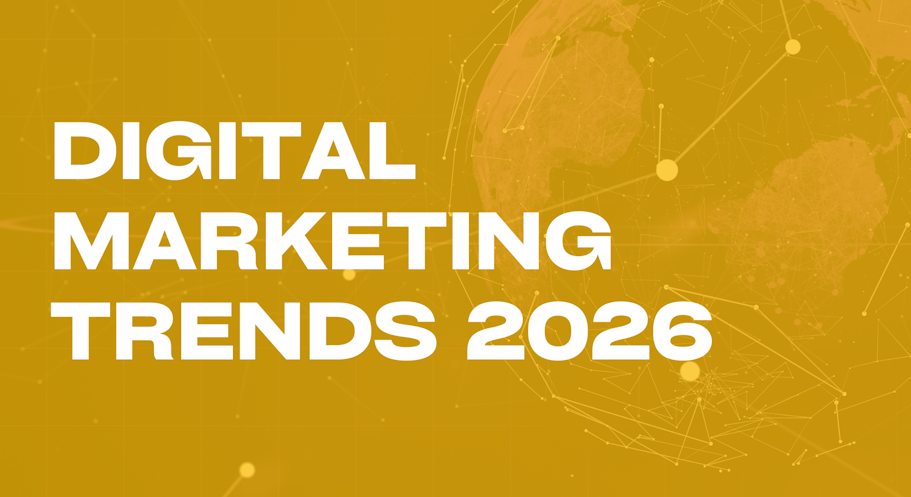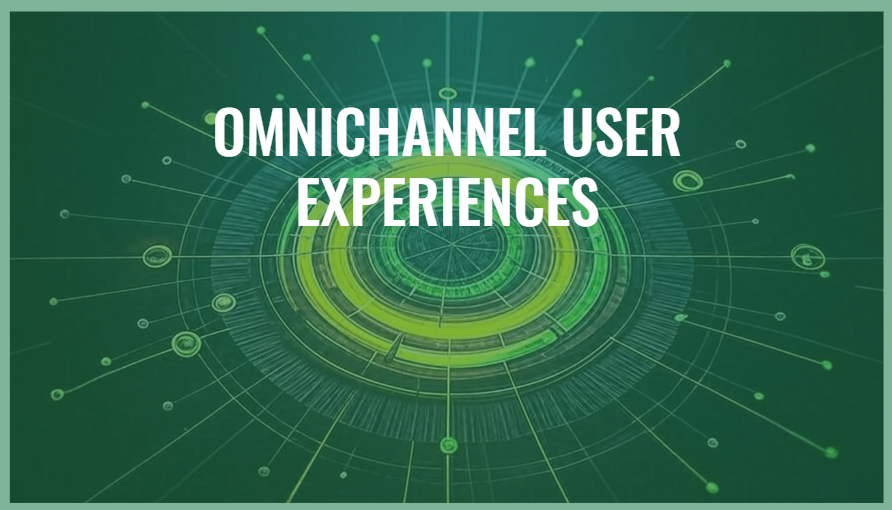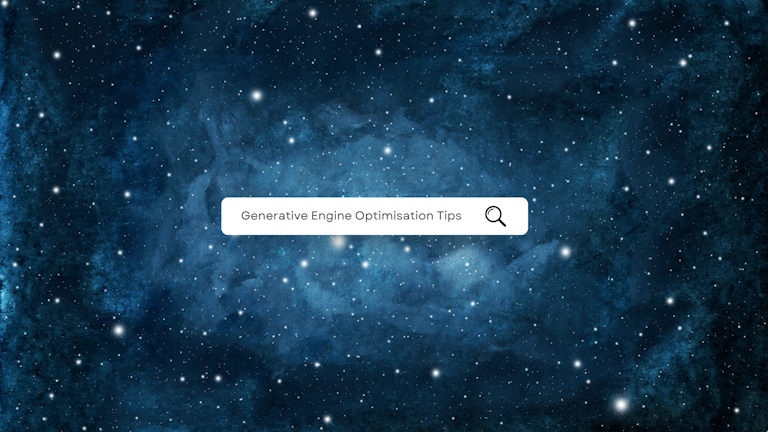
2026 isn’t about chasing marketing hype, it’s about execution. AI is important, sure, and will become even more important over time but the practitioners who’ll win next year are the ones who understand the structural shifts behind the headlines: search changing under our feet, customer behaviour fragmenting, creators becoming competitors and data ownership turning into a superpower.
This isn’t theory — it’s what’s working and failing right now inside agencies, in-house teams and consultancy rooms.
As we move into 2026, the digital marketing landscape is not simply evolving — it’s undergoing significant structural shifts and nobody can be truly sure of what to expect in the year ahead. AI remains a dominant backdrop, but the most strategic opportunities lie beyond this AI-hype. This article explores the major trends that will disrupt how digital marketing consultants and in-house teams operate in 2026 from a strategic perspective.
With the deprecation of third-party cookies, heightened privacy regulation and users increasingly controlling their data, marketers must pivot to owning and leveraging first-party and even zero-party data. This isn’t just compliance — it’s an opportunity to build competitive moat. For consultants, this will lead to a greater focus on identity stitching, consent-ed value exchanges and shifting measurement models.
What the experts are saying:
Rand Fishkin’s “State of Search Q1 2025” data (with clickstream insights) underscores that users are changing how they discover and provide data.
Will Critchlow explores how SEO and what he calls GEO (Generative Engine Optimisation) require fresh data feeds and attribution models.
Understanding the direction is a start, but the value is in turning this into measurable action. The following are likely to feature in 2026 planning sessions:
Social media platforms are built to keep audiences on the platform. This can be a hard one to digest for marketers — it still is for me, I have always preferred to build out my content on my own website but this can be counterproductive. Algorithms across TikTok, Instagram, Youtube etc. are prioritising content that sells inside the platform, not traffic being sent away to a website. This native shopping experience will become even more seamless. So there’s a need to embrace it.
There’s plenty of evidence to show that brands with creator-led storefronts are converting 3–5× better than brands pushing traffic to external landing pages. Insights from search experts indicate that SEO and commerce are merging, with AI-powered answers appearing directly in search results. The positive news is that shopping platforms like Shopify have plugins (apps) to support this native customer journey. Be sure to take advantage by setting up platform native shops in whatever social media channels your customers are active. This should have a knock-on impact on what you are measuring (e.g. native conversions versus sessions / bounce rates); more conversion-oriented content (e.g. FAQs) in your social feeds and a shift from demanding awareness from influencer marketing to more meaningful collaboration on transaction growth.

Consumers don’t think about their purchase in terms channels — only marketers do this! To the customer it’s one continuous journey: they saw your TikTok, searched you on Google, walked into your shop, scanned a QR code and bought later on desktop. Some of this journey is active, some is passive. If your brand can’t connect the dots, someone else will.
What the experts are saying backing:
Discussions on AI search point out how it alters discovery across physical and digital touchpoints but at the same time, it’s early days in terms of the level of influence AI is having on the search experience. Warnings from content strategy experts stress that older content can feed into AI search and influence reputation. This could be damaging, so it’s important to conduct regular audits and refresh content to match your current customer journey.
The AI doomsday brigade would have you believe that marketing as a profession is headed for extinction due to advances in artificial intelligence. I firmly believe the opposite is true. Rudimentary tasks might be handled by AI but the intricacies of a well-orchestrated data-driven marketing campaign will require human direction for the foreseeable future. AI tools will come with a learning curve but will benefit marketers. In 2026, this will include:
This isn’t about being nice and it’s not just a box-ticking exercise. It’s about trust, conversion and legal survival. Users know when they’re being tracked and they don’t tend to like it. Regulators are watching and the platforms are covering themselves. The brands winning are the ones that openly say: “Here’s why you’re seeing this and here’s how we use your data.”
Why transparency matters:
Arguments in any leading marketing resource today repeatedly position trust as a key conversion tool. Reminders from search updates emphasise that human-centric, transparent content still ranks highly.
This should already be embedded in your marketing strategy but perhaps the transparency hasn’t been leveraged openly. This presents an opportunity to build consumer trust. Here’s a few steps you can take:
Creators are no longer “media placements” — they’re fast becoming leading brands in their own right and the tectonic plates of value are shifting. Content creators are building their own products, SaaS tools, online courses and in-person events and they are definitely already taking market share from traditional brands. Expect this to continue and even accelerate in 2026.
A new wave of experts are already here:
Brands need to operate like creators — agile, test-driven and focused on high-value niches. Various insights in 2025 have shown that reach is less critical than building trusted influence networks.
2026 will be a major disruptor for influencers and content creators as well as buyers. The best are already adapting and relationships are far less transactional exchanges and more strategic partnerships. Here’s how it will play out practically for businesses:
Stop buying creator posts and measuring success in traffic and clicks. Instead, start building lasting creator partnerships (revenue share models, joint ventures, equity deals). The transactional model takes less effort and risk but the best pay-off will come from finding synergetic partnerships.
Have a growth collaborator mindset. Give creators custom dashboards, product samples, early access and treat them like B2B partners.
Build your marketing engine with specific mini-funnels powered by creators maximising exposure to their audience with your logistics and measurement.
Think revenue, not clicks. Track creator-led revenue like you track PPC. If your CFO can’t see numbers, it didn’t happen.
Multi-channel has been a digital marketing buzzword for a decade at this stage. It’s time to go beyond and focus on a unified customer experience. The norm for customers today is to bounce between mobile, voice chat, AI tools, desktop and in-store. In B2C industries this can happen in a matter of minutes. If your analytics, UX and content don’t reflect this new reality, you’re already behind. It’s already well established that the buyer’s journey is composed of many ‘micro-moments’ across multiple devices and environments. Your marketing needs to reflect that.
The first step if you’re not there already is a shift in mindset but these practical tips should also help you get started:
Generative Engine Optimisation (GEO) isn’t about gaming AI like ChatGPT, it’s about crafting content that’s structured, credible, and clear for AI and answer engines. Insights from platforms like SearchPilot show GEO frameworks are evolving, with experts noting, “Good SEO is good GEO — write for people, and AI will get it.” Search volumes? They’re not fading; they’re shifting to zero-click and AI surfaces. Now is the time to optimise for the future! Read more for a detailed breakdown on how to incorporate GEO into your SEO efforts.

2026 is not about chasing silver bullets or handing your workload over to machines. In fact, it’s likely to be a learning curve similar to when digital marketing was in its early states. It’s about mastering fundamentals in a new environment. The in-house marketing teams and consultancies that will win big in 2026 are the ones who:
If you need help taking your marketing strategy to new heights in 2026, please get in touch!
To provide the best experiences, we use cookies to store and/or access device information. Consenting to cookies will allow us to process data such as browsing behaviour or unique IDs on this site. Not consenting or withdrawing consent, may adversely affect certain features and functions.